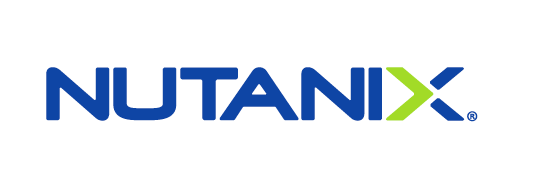The University of California San Diego relies on public cloud services to support research and instruction, but important usage details had long been a mystery for the information technology department.
“When I came to UCSD, it was essentially the Wild West,” says Gabriel Edwards, product manager and cloud services manager for workplace technology services at the public university. “Everybody had their own Amazon Web Services (AWS) account. Some of these accounts were tied to their personal accounts and credit cards and were expensed to their departments. There was minimal oversight.”
Control over cloud usage
With Nutanix Beam, IT staff at the 40,000-student institution can now keep track of and control cloud usage, with improved compliance with government and academic regulations. The solution allows the school to manage expenditures, minimize risks and streamline administrative tasks without curtailing faculty and researcher access to the cloud.
“Nutanix Beam has paid for itself by providing the insight we need to control costs,” says Declan Fleming, enterprise architect for cloud at the university. “In one instance, we uncovered an API (application programming interface) on a development environment that did not need to be running, and we shut it off, saving thousands of dollars per month.”
Single-dashboard accessibility
The single-dashboard visibility and automation provided by Beam enables the university to better understand and control all of its cloud expenditures—while saving staff time and effort so they can focus on other tasks.
“Beam provided the tools we need to inspect and aggregate information, so we can make sense of it.”
“Our invoices for AWS accounts go to a central clearinghouse, which creates a complex, detailed spreadsheet,” Fleming says. “In the past, an IT administrator would have to examine it manually and reconcile costs against the AWS billing console. It was time-consuming, and the process could fall months behind, creating irregular billing for campus departments. Beam can handle that process for us, saving hours of time.”
‘Accidentally got security governance’
Other features include Beam’s pre-built security and compliance checks, which provide one-click remediation for cloud vulnerabilities. “We were after cost governance, and we accidentally got security governance with it,” Fleming says.
Nutanix Beam also enables rich analytics that detail cloud consumption patterns, and one-click cost optimization across cloud environments.
“The Nutanix Beam dashboard is clean and easy to use, and the regular summary emails are a huge help in enabling us to spot potential anomalies,” Fleming says. “Beam provided the tools we need to inspect and aggregate information, so we can make sense of it.”
Multicloud technology transforming higher ed business practices
Nutanix Beam management software provides visibility and optimization
 Q&A with Jason Graun, Sales Engineering Manager, Nutanix
Q&A with Jason Graun, Sales Engineering Manager, Nutanix
How is cloud technology transforming higher ed business practices?
Colleges use cloud tech to provide hands-on experiences for students and staff. I’ve seen it used for advanced structural engineering modeling—manipulating the structural integrity of buildings. Higher ed also uses cloud computing to analyze healthcare data for students and researchers. The traditional textbook is moving to a hands-on cloud experience.
What are the pros and cons of hosting multicloud environments?
An advantage is the ability to move between multiple cloud environments based on project requirements and to shorten application deployment time. Each cloud option—public, private or hybrid—has strengths and sweet spots. Having multiple cloud options allows colleges to be more cost-effective and operationally efficient. They can also move more quickly from having no infrastructure to launching an application.
“Having multiple cloud options allows institutions to be more cost-effective and operationally efficient based on their needs.”
The biggest disadvantage is complexity. Cloud providers can have different ways to implement features, requiring IT staff to learn multiple platforms. Sometimes pricing gets out of control if you’re focused on one provider and not paying attention to another that is getting more expensive. Having access to multiple public clouds also makes financial leakage more likely especially without proper governance.
How can edtech experts manage multicloud platforms internally?
Edtech experts should look for a tool to provide visibility, control and optimization for all cloud options. If you’re comparing costs of workloads—the virtual machines that are running in the cloud—this kind of tool can ensure that you’re getting the best pricing. But the tool must also be able to determine if you would save money by moving certain applications to a private enterprise cloud in your data center.
How does automating practices improve management in higher ed?
Having a third-party tool such as Nutanix Beam, which can move across different clouds and understand how each works, provides operational efficiencies while reducing complexity and increasing compliance. Beam identifies your biggest cost savings and security compliance issues to help you focus on the biggest positive impacts for your business practices.
 Nutanix Enterprise Cloud runs on hyperconverged infrastructure that looks and feels like the public cloud but is automated and autonomous within the higher ed data center. It lets you model and potentially save money by building a private cloud.
Nutanix Enterprise Cloud runs on hyperconverged infrastructure that looks and feels like the public cloud but is automated and autonomous within the higher ed data center. It lets you model and potentially save money by building a private cloud.
For more information, please visit Nutanix.com/solutions/education

